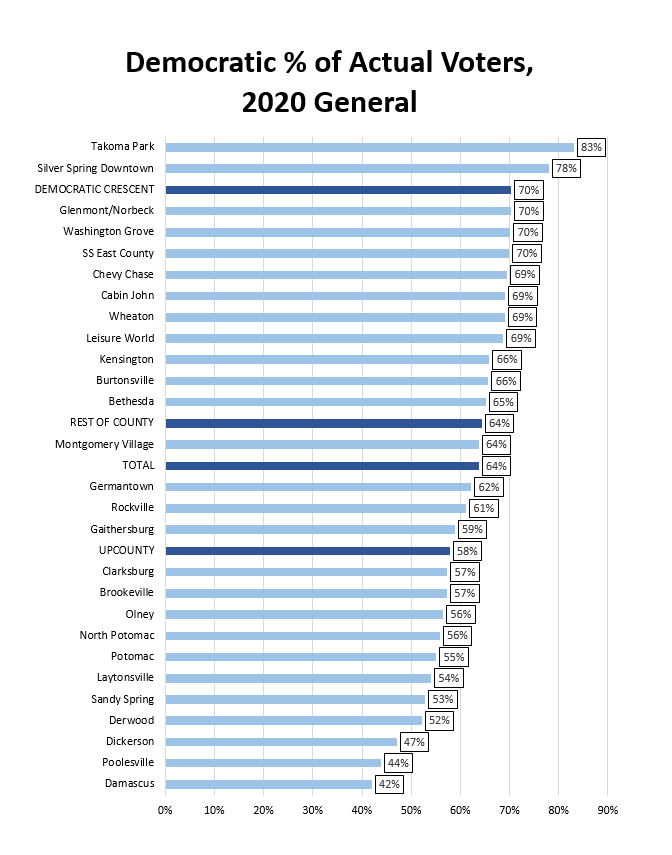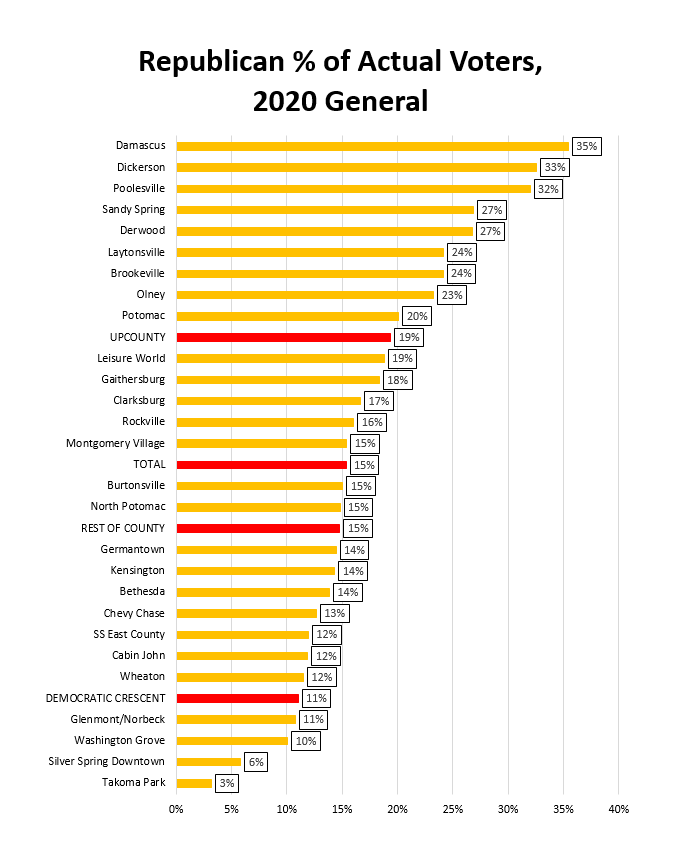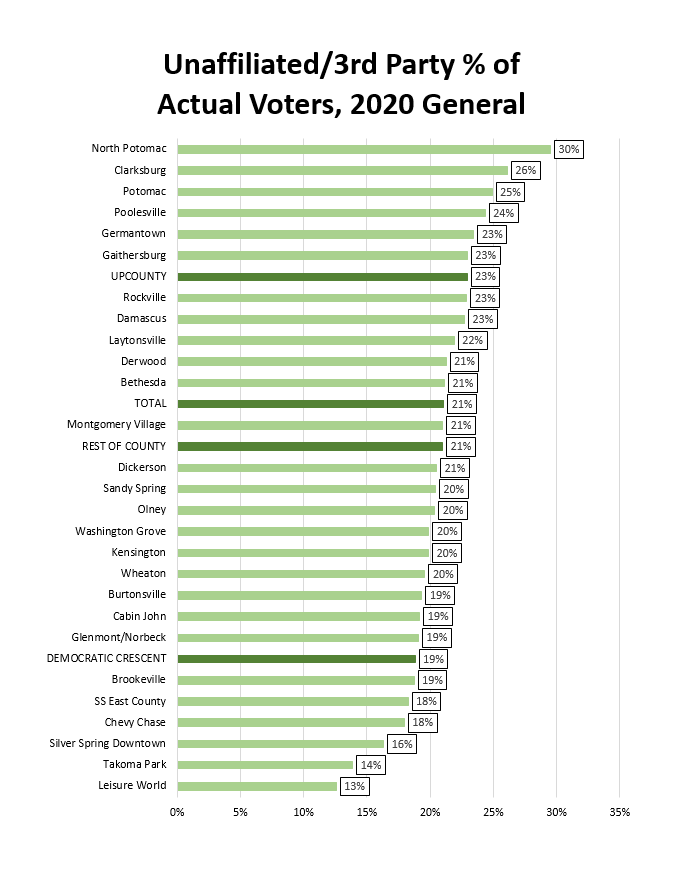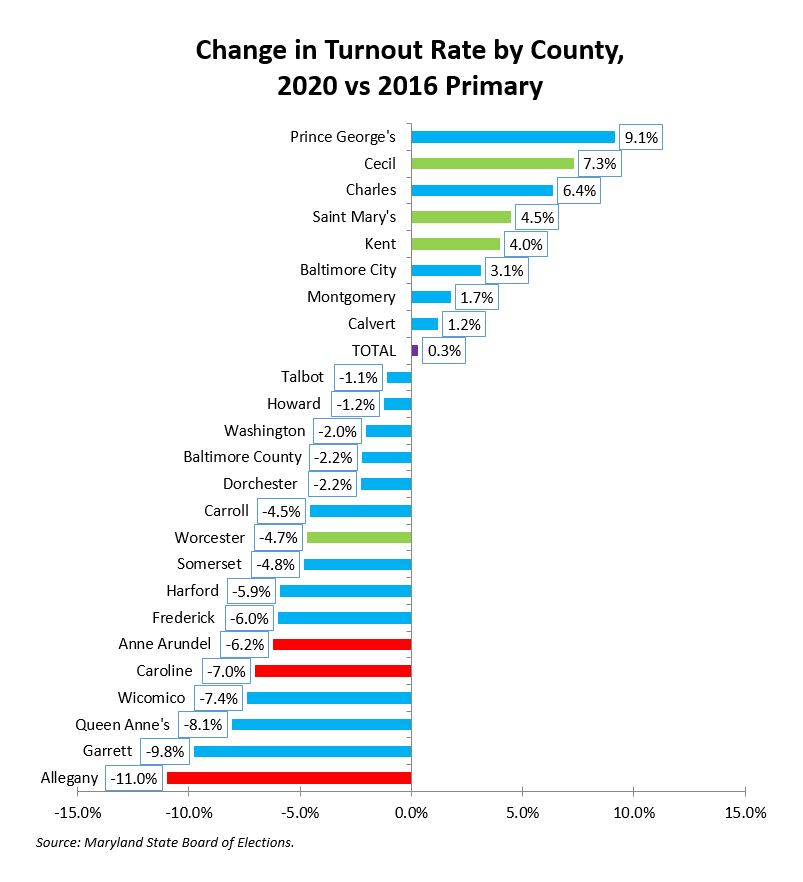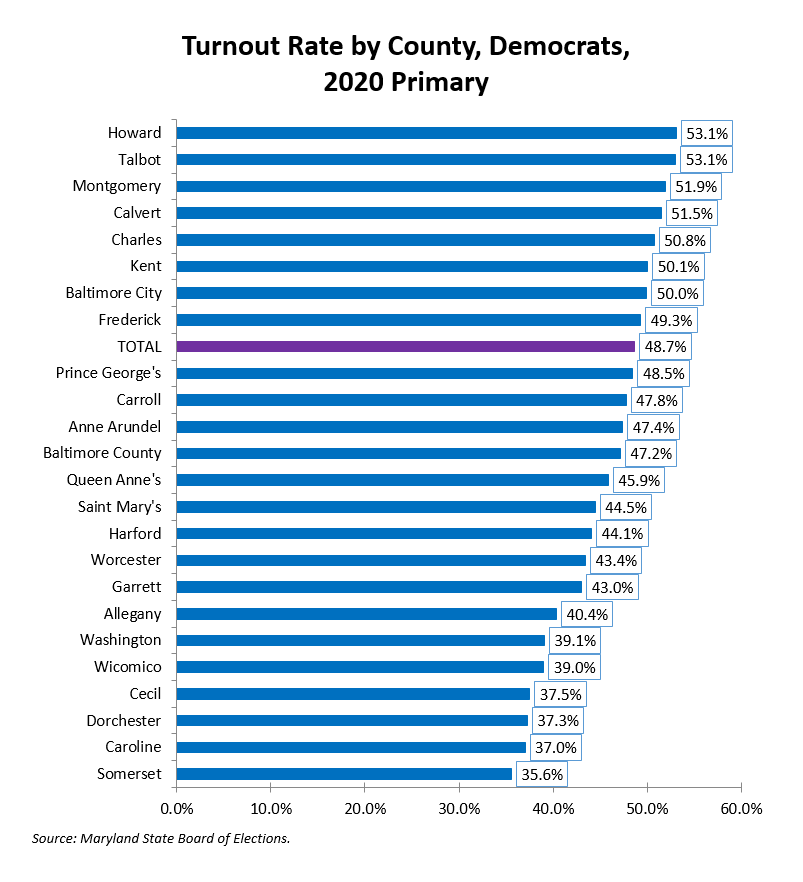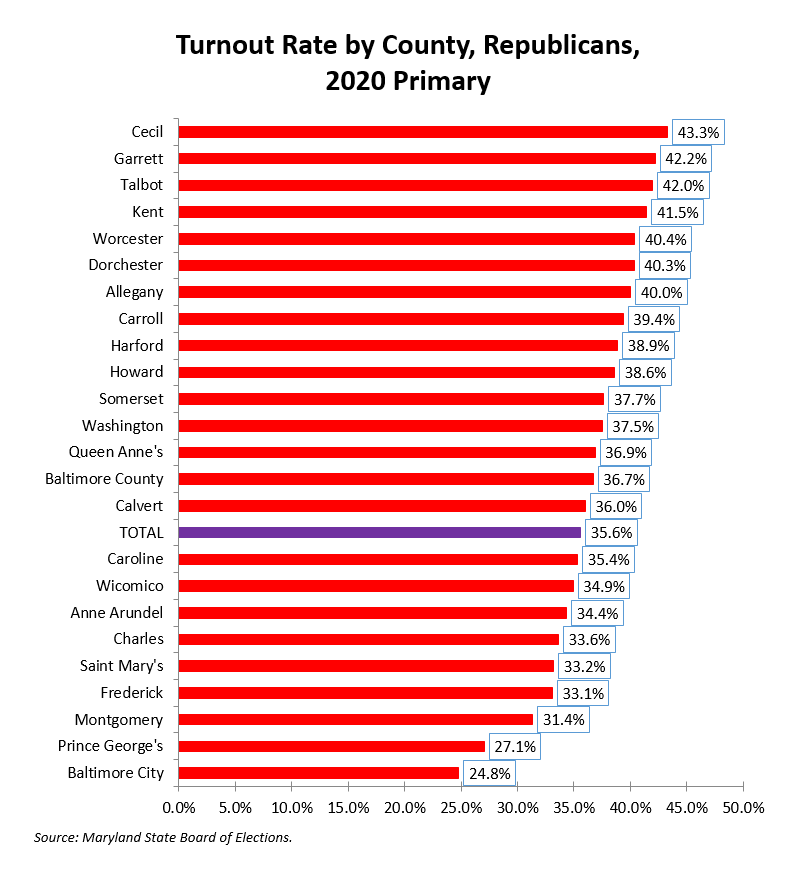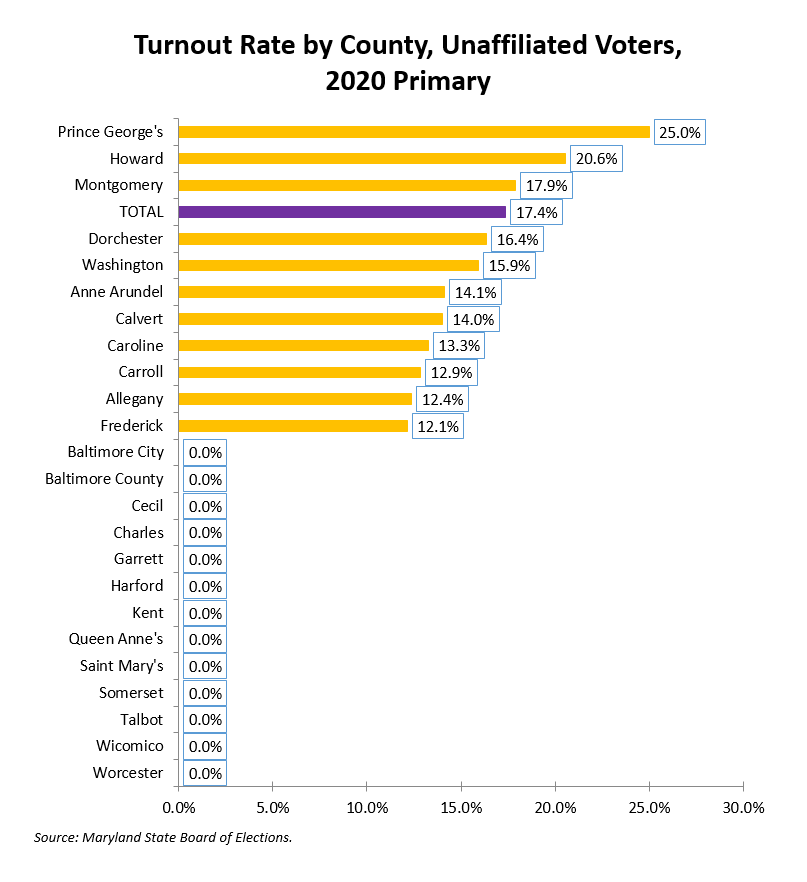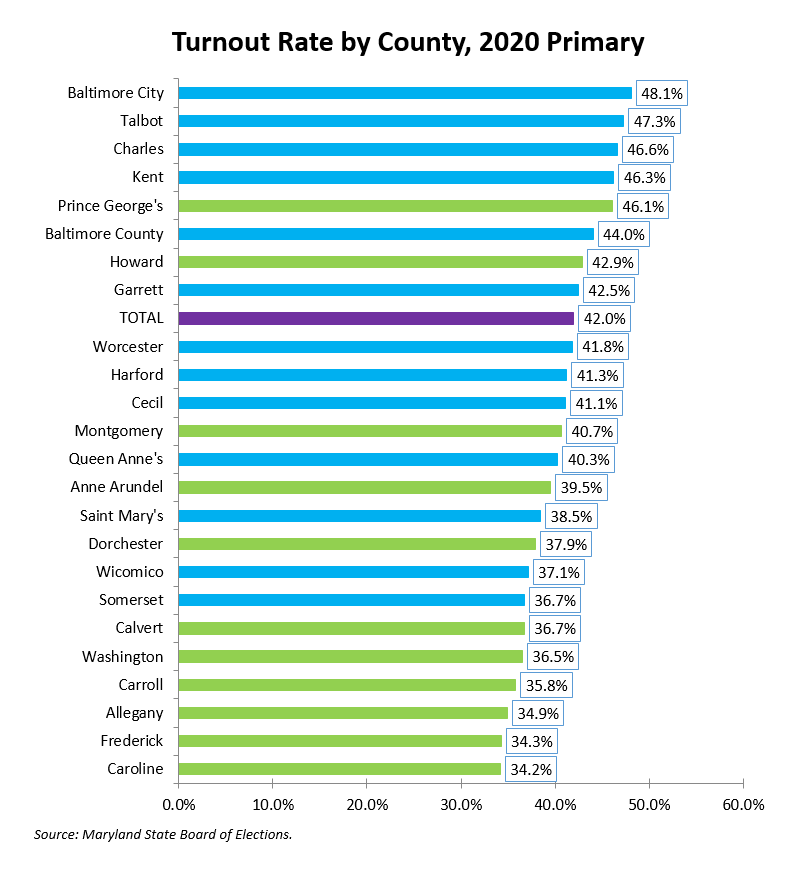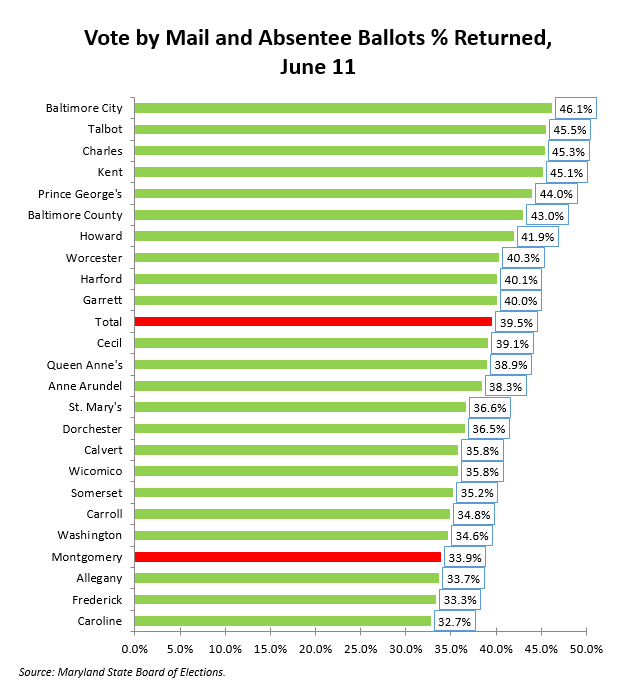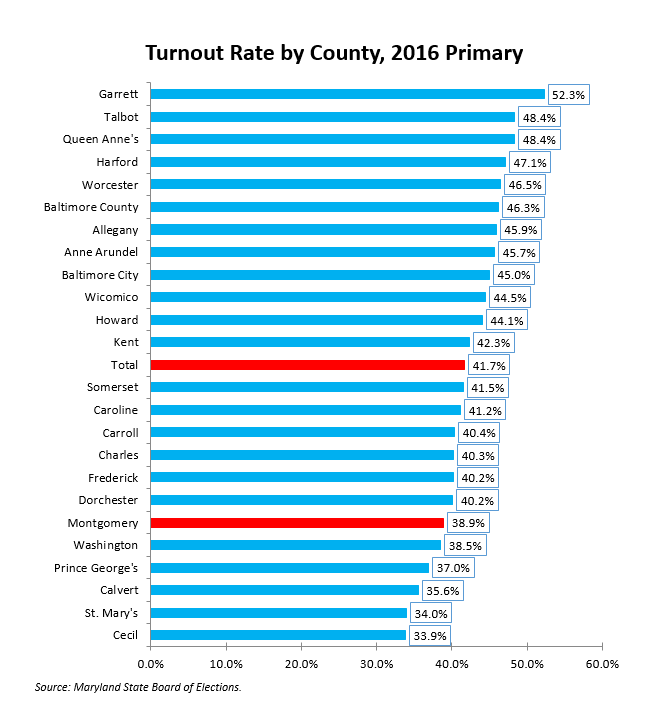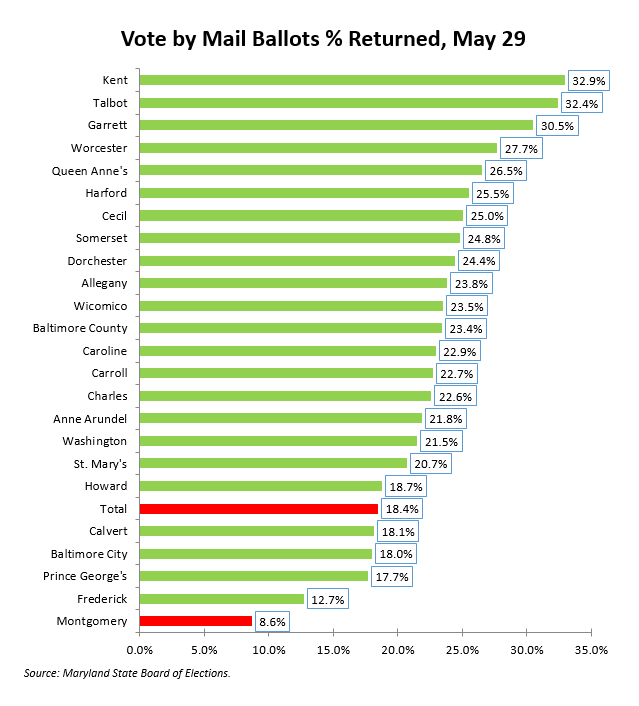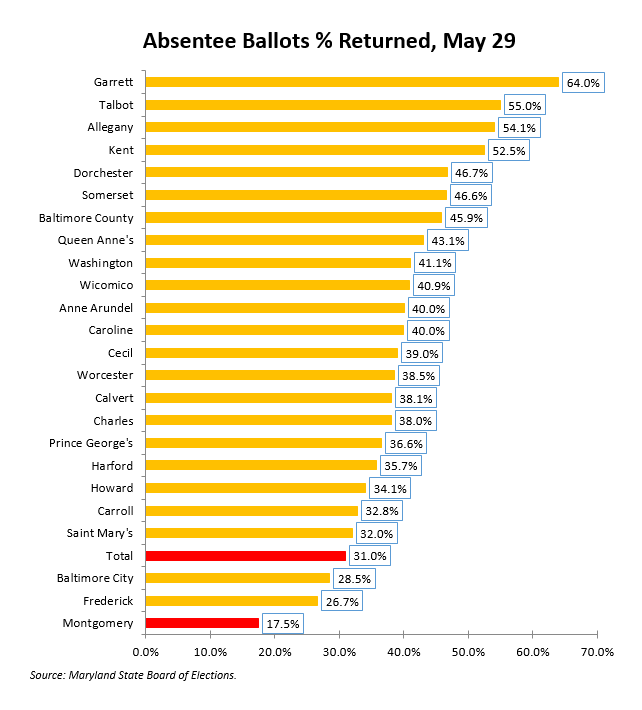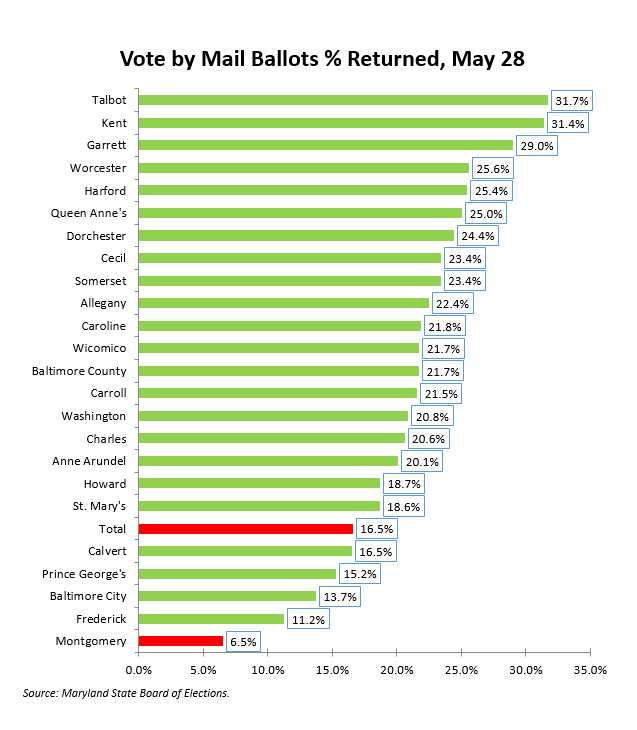The geographic nature of partisan polarization in Maryland results in radically different distributions of Democratic and Republican primary voters. On Friday, I took a look at the Democrats. Today, it’s the turn of the Republicans.
While only a desultory 7.7% of Democratic primary voters in 2018 lived on either the Eastern Shore or in the Western 3 (Garrett, Allegany and Washington Counties), 19.2% of Republican primary voters lived in the same areas. That looks to increase in 2022 as the share of eligible Republicans in the two regions has grown to 20.8% from 19.4%.
This pattern reflects a continuation of Republican growth in rural areas that characterized shifts generated by Donald Trump’s two White House bids. So does the shift away from Republicans in more urban parts of the state, especially in the educated and racially diverse Washington suburbs. Montgomery was home to 20.0% of Democratic primary voters in 2018 but only 11.2% of Republicans.
That gap looks to grow as the Montgomery’s share of eligible Democrats has grown 0.3% but its share of Republicans has dropped by 1.2%. Differences are even starker in neighboring Prince George’s, which is now home to 20.8% of Democratic eligible voters but only 3.8% of Republicans. Put another way, Prince George’s casts fewer Republican primary votes than Washington County despite being home to six times as many total residents.
Driven by the weight of suburban Republican populations, the Baltimore metro area punches harder in Republican than Democratic primaries. Baltimore County increasingly tilts Democratic but it has a strong Republican presence and Gov. Larry Hogan carried it handily in his two gubernatorial wins. It is home to 14.0% of eligible Republican voters, the highest share in the state.
Anne Arundel is next with 13.2% of all Republicans. Meanwhile, the considerably smaller but ultra Republican exurbs of Carroll and Harford Counties together are home to 14.4% of Republicans. Carroll is the arguably the most right-wing area of the state and Trumper Del. Dan Cox will hope to do well there. Both Cox and his main challenger, Kelly Schulz hail from Frederick, which has 6.8% of Republican voters.
In short, while Democratic candidates will need to spend most of their time camped out in the most densely populated portions of the State, Republicans must get travel more because their voters are far less concentrated. It may also help explain partisan differences in the regional focus of priority transportation projects.



